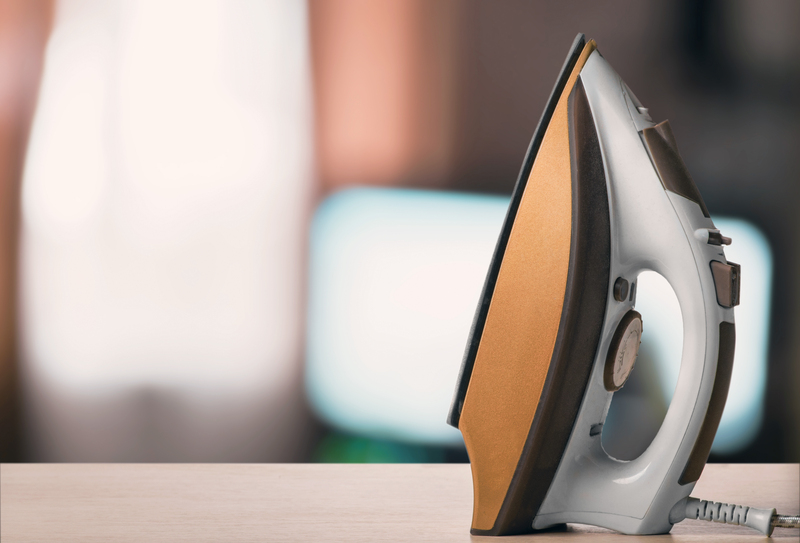Breathe Easy in Your Fresh, Allergen-Free Dwelling
Posted on 26/09/2025
Breathe Easy in Your Fresh, Allergen-Free Dwelling
Enhancing your home's air quality isn't just a luxury--it's essential for your health and comfort. In today's fast-paced world, our homes act as shelters from outside elements, but they themselves can harbor various allergens. An allergen-free home environment promotes better breathing, reduces allergy symptoms, and creates a sanctuary for overall well-being. In this comprehensive guide, you'll learn how to transform your house into a fresh, allergen-free dwelling so you and your family can literally breathe easier.
Why Prioritize an Allergen-Free Living Environment?
Invisible "invaders" like dust mites, pollen, mold spores, and pet dander can compromise indoor air quality, triggering allergies and respiratory issues. Chronic allergies can lead to fatigue, poor sleep, and long-term health complications. Taking steps toward an allergen-free home can:
- Reduce allergy flare-ups and asthma attacks dramatically
- Improve sleep quality by minimizing nighttime irritants
- Boost productivity and focus by reducing constant discomfort
- Create a welcoming, healthy environment for both residents and guests
- Support children, the elderly, and anyone with compromised immune systems

Understanding Common Indoor Allergens
To effectively create a fresh, allergen-free dwelling, understanding the main culprits that impact indoor air is key. Here's an overview:
1. Dust Mites
These microscopic creatures thrive in bedding, upholstered furniture, and carpets. Their waste products trigger sneezing, runny noses, and itchy eyes.
2. Pet Dander
Even hypoallergenic pets shed skin cells--also known as dander--which can linger in fabric and on surfaces.
3. Mold and Mildew
Mold spores spread quickly in damp environments like bathrooms, basements, and kitchens, causing strong allergic reactions and even serious respiratory illness if left untreated.
4. Pollen
Pollen from trees, grasses, and weeds can easily enter your home on clothing, shoes, pets, and through open windows--especially during allergy seasons.
5. Volatile Organic Compounds (VOCs)
These are chemicals released from paint, cleaning products, new furniture, or carpets, and can cause eye, nose, and throat irritation or exacerbate allergies.
Key Steps to a Fresh, Allergen-Free Dwelling
Ready to take control of your living space and breathe easy? Here's a step-by-step approach to purifying your home's environment:
1. Improve Ventilation
- Use exhaust fans in bathrooms, kitchens, and laundry rooms to reduce humidity and prevent mold growth.
- Open windows occasionally (weather permitting) to circulate fresh air and dilute indoor pollutants.
- Invest in a heat recovery ventilator (HRV) or energy recovery ventilator (ERV) to ensure continuous fresh air exchange, especially in modern, airtight homes.
2. Regular Deep Cleaning
- Vacuum regularly using a vacuum cleaner equipped with a HEPA filter.
- Damp-dust hard surfaces weekly to remove dust and dander instead of disrupting particles with dry dusting.
- Wash bedding, pillowcases, and curtains weekly in hot water to kill dust mites and remove pollen.
- Steam-clean carpets and upholstery every few months or consider replacing carpets with hard flooring for easier allergen control.
3. Control Humidity Levels
- Keep indoor humidity between 30% and 50% to prevent dust mite breeding and mold growth.
- Utilize a dehumidifier in basements, bathrooms, or other moisture-prone areas.
- Fix plumbing leaks and address any water intrusion immediately.
4. Allergen-Proof Your Bedroom
- Use allergen-blocking mattress and pillow covers.
- Opt for washable bedding and replace heavy drapes with blinds or washable curtains.
- Limit decorative pillows or stuffed animals which can trap dust and allergens.
5. Keep Pets Clean and Groomed
- Bathe pets regularly and brush them outdoors when possible.
- Keep pets out of bedrooms and off upholstered furniture for maximum allergen control.
- Use high-performance air purifiers in homes with pets to capture dander in the air.
6. Eliminate Mold and Mildew
- Scrub bathroom tiles and surfaces with mold-killing solutions such as vinegar or hydrogen peroxide.
- Use a squeegee after showers to prevent mold build-up.
- Check window sills, basements, and crawlspaces regularly for signs of mold infestation.
7. Minimize Pollen Entering Your Home
- Keep windows closed during high pollen seasons or use pollen-proof screens.
- Change clothes and shower after spending time outdoors to prevent pollen from transferring onto furniture and bedding.
- Wipe pets' paws and fur after outdoor walks, especially during spring and fall.
8. Choose Non-Toxic Cleaning Products
- Avoid harsh chemical cleaners and artificially fragranced sprays.
- Opt for unscented, plant-based, or homemade cleaning products to reduce indoor chemical exposure.
- Store chemicals in well-ventilated areas, away from living spaces.
9. Use Air Purifiers and Filters
- Install HEPA air purifiers in bedrooms and living spaces to trap fine particles, dander, and pollen.
- Change HVAC filters every 1-3 months and choose filters rated for allergen reduction.
- Consider room-sized purifiers for those with severe allergies.
10. Organize and Declutter
- Reduce clutter where dust can accumulate--less stuff means fewer traps for allergens.
- Minimize the use of heavy rugs, throw pillows, and fabric wall hangings.
- Store seasonal clothing and linens in sealed containers to prevent dust buildup.
Smart Addition: Allergen-Resistant Home Furnishings
When updating your living environment, consider products designed with allergy sufferers in mind:
- Opt for leather, wood, metal, or other hard surfaces, as these don't trap allergens.
- Choose blinds or washable curtains over traditional fabric drapes.
- Select closed cabinets instead of open shelving to minimize dust accumulation.
- Look for hypoallergenic paints and flooring materials with low or no VOC emissions.
Routine Maintenance Tips for a Healthy Home
Setting routines is crucial to maintaining a fresh, allergen-free dwelling. Here are some habits to embrace:
- Establish a weekly cleaning schedule and stick to it year-round.
- Rotate air purifier filters as per manufacturer instructions.
- Monitor humidity levels regularly with a digital hygrometer.
- Address minor repairs and leaks promptly to prevent water intrusion.
- Ask guests to remove shoes at the door to reduce outside contaminants.
Special Tips for Allergy and Asthma Sufferers
If you or your loved ones suffer from allergies or asthma, consider these extra recommendations:
- Create an "allergy-free zone" in at least one room (often the bedroom) with the highest cleaning standards.
- Use unscented laundry detergents and avoid fabric softeners with heavy perfumes.
- Consult with an allergist to identify your specific triggers and tailor your home cleaning plan accordingly.
- Keep quick-relief medications in an easily accessible location and ensure your living environment supports recovery during flare-ups.
Is an Allergen-Free Home Worth the Effort?
Absolutely! Transforming your house into a sanctuary from allergens significantly enhances your quality of life. The investment in cleaning tools, hypoallergenic furnishings, and air purification pays off with:
- Fewer sick days and medications
- Better sleep and improved mood
- Protection for vulnerable family members
- Greater enjoyment of your living environment
Remember: Allergy-proofing your home isn't about perfection, but about artfully minimizing triggers through practical, sustainable routines.

The Future of Allergy-Friendly Homes
As awareness of indoor air quality grows, technology and product innovations are making it even easier to breathe easy in your fresh, allergen-free dwelling. Smart home systems can now monitor air quality in real time, robotic vacuums simplify cleaning, and next-generation materials actively repel dust and bacteria. By combining these advancements with the strategies above, you're well on your way to maintaining an environment that nurtures good health and peace of mind.
Final Thoughts: Make Your Fresh, Allergen-Free Dwelling a Reality
Prioritizing an allergen-free home is one of the best commitments you can make for yourself and your loved ones. From daily cleaning routines to investments in air quality technology, even small changes can deliver significant benefits. Start with one room, or one habit, and build from there. The result? A fresher, healthier, and happier home where everyone can breathe easy, every day!
Transform your home into a safe haven and enjoy the benefits of fresher air and fewer allergies starting today. Breathe easy--you deserve it!




